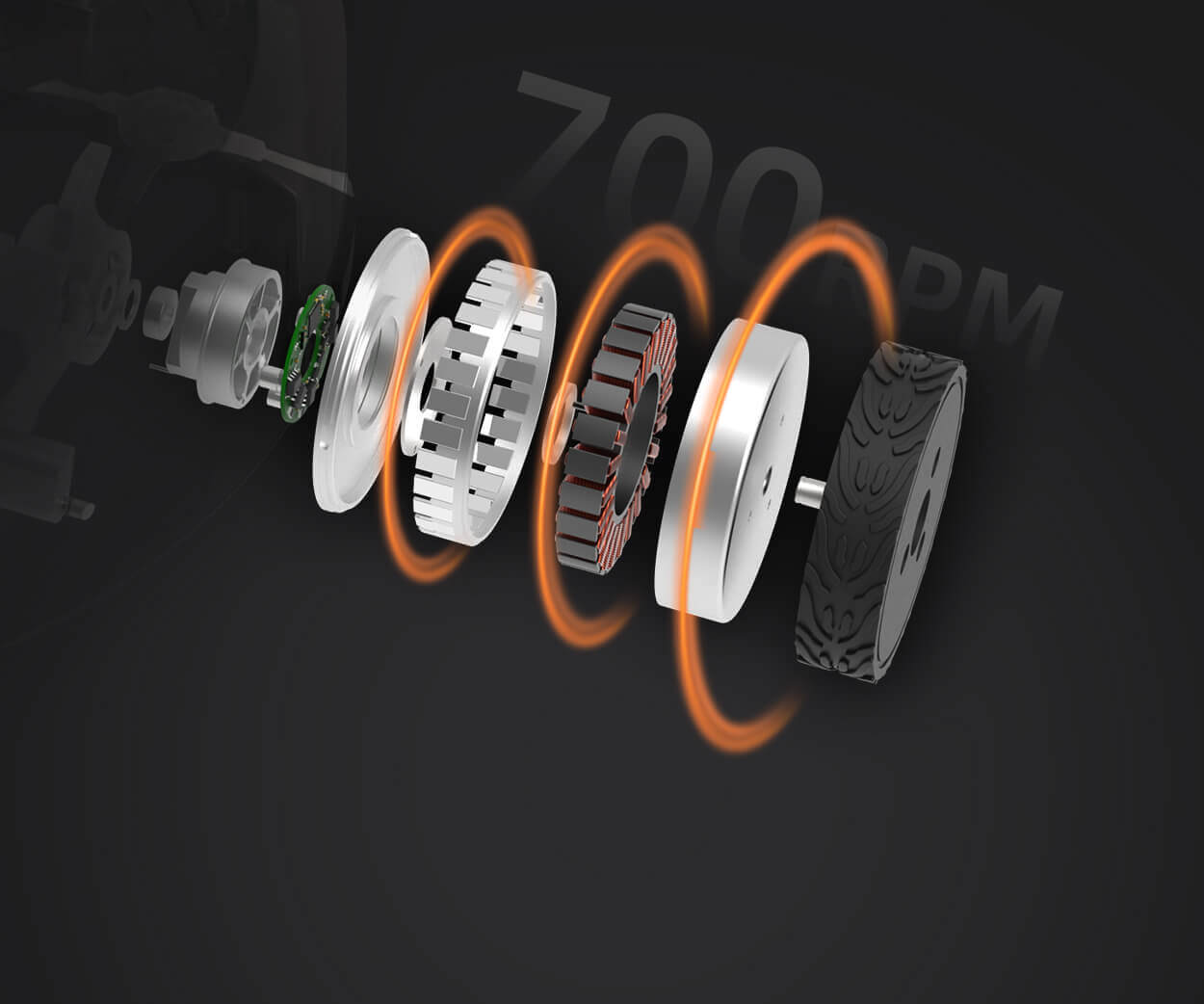part 1:
Unlocking Precision and Innovation: The Power of a 360° Servomotor with Motion Sensor
In a world driven by automation, robotics, and smart technology, the pursuit of precision, efficiency, and adaptability has never been more intense. Among the many components powering this evolution, the servomotor stands out as a marvel of engineering, integral to a vast array of applications—from industrial automation to consumer electronics. When this trusty device is combined with a 360-degree rotational capability and an integrated motion sensor, it creates a tool that is not only versatile and accurate but also capable of sensing its environment and adjusting accordingly.

Imagine a robotic arm in an assembly line that can rotate smoothly in any direction, precisely position components, and respond dynamically to changes in its surroundings. This is the promise of a "servomotor de 360 con sensor de movimiento," or in English, a 360-degree servomotor with a motion sensor. It is a harmonious blend of mechanical ingenuity and electronic intelligence, designed to deliver superior control and flexibility.
The Basics of a Servomotor
To appreciate its capabilities, first, consider what a servomotor is. At its core, a servomotor is a device that provides precise control over angular or linear position, velocity, and acceleration. Unlike standard motors that run continuously, a servomotor is typically part of a closed-loop system with feedback mechanisms—most often through encoders or potentiometers—that continually inform the controller about the motor’s exact position.
This feedback loop allows for real-time adjustments, enabling complex tasks like robotic gripping, camera positioning, or precise manufacturing processes. Servomotors can come in various sizes and power ratings, but their defining characteristic is their high degree of precision and responsiveness.
Introducing the 360-Degree Rotation
Most traditional servomotors are designed with limited rotation ranges—often 0 to 180 degrees or a similar subset. However, a 360-degree servomotor extends this range, offering complete rotational freedom. Imagine a mirror that can turn infinitely in either direction without stopping; the possibilities for applications become more expansive. Such motors are especially useful in applications where unrestricted rotational movement enhances functionality, such as in robotics, camera gimbals, or antenna positioning systems.
A 360° servomotor is typically constructed with specialized components to handle continuous rotation without losing positional accuracy, often implementing a "continuous rotation servo" or a modified brushless motor with intricate feedback systems.
The Importance of Motion Sensors
Adding a motion sensor to this setup takes the functionality a leap further. These sensors—like infrared, ultrasonic, or accelerometers—detect movement or orientation changes in the environment or the device itself. When integrated into a servomotor, the sensor acts as a sixth sense, providing data that can be processed to enable immediate responses.
For example, in a security camera system, the motor's sensor detects motion within its field of view, prompting the camera to rotate smoothly towards the movement, tracking a person or object with increased fidelity. In robotics, the sensor might recognize obstacles or adjust the arm’s position based on detected vibrational or spatial cues.
Key Features of the 360° Servomotor with Motion Sensor:
Full rotational control: Capable of spinning continuously in either direction, enabling complex movement patterns. Precision positioning: Maintains accuracy through feedback, essential for detailed tasks. Adaptive response: The integrated motion sensor allows the motor to respond to environmental stimuli instantly. Compact design: Suitable for integration into various devices and platforms without excessive bulk. Versatile applications: From robotics to smart home devices, the potential uses are vast.
Practical Applications: Transforming Industries and Daily Life
The combination of 360° rotation and integrated motion sensing reshapes what machines and devices can do. Here are some compelling examples:
Robotics: Robotic arms and mobile robots benefit immensely from full rotation, enabling complex manipulation and navigation while dynamically reacting to their surroundings. Surveillance and Security: Cameras equipped with these servomotors can autonomously track moving objects, providing effective surveillance with minimal human intervention. Medical Devices: In rehabilitation and assistive technology, such motors can power prosthetics and exoskeletons that responsive move according to user needs and environmental cues. Professional Photography and Videography: Camera gimbals with these motors enable fluid, precise movement, capturing stunning shots while adjusting to the environment automatically. Smart Home Automation: Devices such as automated blinds or rotating displays can benefit from the seamless, responsive movements powered by this technology.
Technological Innovations and Future Potential
The integration of a motion sensor into a 360° servomotor aligns with the trend of making machines smarter and more autonomous. As sensor technology advances—incorporating AI algorithms, more sensitive detectors, and wireless communication—the capabilities of these motors will expand exponentially.
Imagine a future where robotic assistants can interact intuitively with humans, adjusting their behavior based on subtle cues—like a gesture or a change in ambient light—all powered by this elegant combination of spinning control and environmental awareness.
Furthermore, the development of more energy-efficient motors and sensors will enable longer operation times in battery-powered applications, fostering innovations in portable and wearable devices. These advancements could lead to smarter manufacturing lines, more responsive healthcare devices, and even autonomous vehicles that adapt their movements perfectly to dynamic surroundings.
Final Thoughts
The "servomotor de 360 con sensor de movimiento" represents a significant step forward in how machines perceive and interact with their environment. Its blend of full rotational capacity, precise control, and sensory intelligence makes it an indispensable component in emerging technology landscapes.
As engineering continues to push the boundaries of what’s possible, these motors will likely become even more integrated, miniaturized, and intelligent—unlocking a new realm of automation and automated responsiveness. Whether in cutting-edge robotics or everyday smart devices, this technology embodies innovation that is practical, adaptable, and poised for future growth.
(Proceeding with part 2 in the next message for completeness.)
Leveraging innovations in modular drive technology, Kpower integrates high-performance motors, precision reducers, and multi-protocol control systems to provide efficient and customized smart drive system solutions.




































